Browse Primary Sources
Locate primary sources, including images, objects, media, and texts. Annotations by scholars contextualize sources.

The Anda Bond
Along with practices of male bonding that are shared with other times and places, such as membership in all-male groups with distinctive uniforms or clothing or socializing in places where women are not allowed or do not go, the Mongols also had a specific type of male bonding, the anda bond.

Chinggis Khan and his wife Börte in The Secret History of the Mongols
Chinggis Khan had four sons by his principal wife Börte, though there is some question as to his eldest son Jochi’s true father. Börte and Temüjin were married as children, and shortly afterward, she was abducted by the rival Merkid confederation, and stayed with them several months before Temüjin recovered her.

Chinggis Khan’s mother Hogelun in The Secret History of the Mongols
The Secret History of the Mongols, the story of the rise and rule of Chinggis Khan and his son and successor Ogodei produced by an anonymous court scribe in about 1240, is full of close mother-son relationships. One of these is the relationship between Temujin (the future Chinggis Khan) and his four brothers and their mother Hö’elun (or Hogelun).
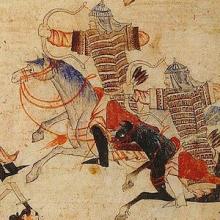
Mounted Mongol Warriors
In this watercolor illustration from the Compendium of Chronicles, the enormous hemispheric history by the learned official Rashid al-Din finished around 1310, mounted Mongol warriors shoot bows and arrows while riding, a military tactic perfected by steppe warriors. The soldiers they are chasing are also Mongol dress, so this may represent a conflict between different Mongol groups.

Chinggis Khan on his father Yesügei
This comment of Chinggis Khan about his father appears in the learned official Rashid al-Din’s Compendium of Chronicles, finished about 1310, so it was probably first handed down orally. In the first part of the comment, Chinggis Khan seems to be extolling his father’s toughness: he had great skills and did not suffer from hunger or thirst.
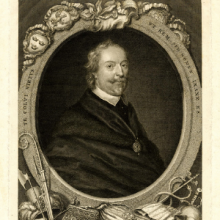
Frontispiece of Sir Thomas Roe
This image is the frontispiece of Sir Thomas Roe (ca. 1581-1644) from the book The Negotiations of Sir T. Roe in his Embassy to the Ottoman Porte from the year 1621 to 1628, a collection of his correspondence during his time as the English ambassador to the Ottoman Empire. Roe advanced England's mercantile interests in Asia throughout the early seventeenth century.

The Archbishop's Palace of Alcalá de Henares
The town of Alcalá de Henares is located outside of Madrid, the current capital of Spain. In the late-fifteenth century, it served an important purpose as the home of the archbishop. His lavish palace was lavishly decorated, but considerably smaller than other royal homes. Yet, it still occasionally hosted other dignitaries, such as Queen Isabella (1451-1504).
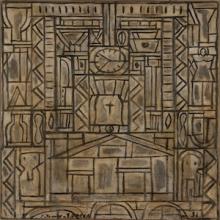
“Contraste” by Joaquín Torres García
This painting, entitled “Contraste,” or Contrast, originates in Montevideo, Uruguay. The artist behind the work is Joaquín Torres García (1874–1949), whose downtown Montevideo home has been converted into a museum dedicated to the artist. Created in 1931, this painting reflects the linear style that Torres Garcia carries through much of his works.
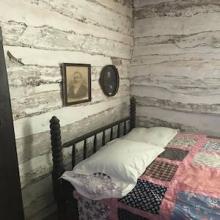
Pound Homestead
This historic homestead was built in the mid-nineteenth century near modern-day Dripping Springs, Texas. It belonged to the family of Joseph M. Pound, a doctor who provided medical services to the local community, including the indigeous peoples (such as the Tonkawa). He had also served in the Confederate army. During this period, Texas was a sparsely-populated frontier region.
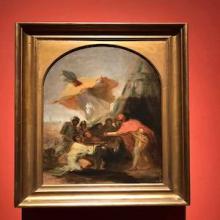
“Aparición de San Isidoro al Rey Fernando el Santo ante los muros de Sevilla” by Francisco de Goya
This religious painting belongs to the extensive works of Spanish painter Francsico de Goya (1746–1828). Although he grew up in Zaragoza, he trained as an artist in Madrid. There he completed much of his works, even becoming the official portrait painter for the monarchy. This work was a pratice piece that Goya used to prepare for altar that he was to paint in the city of Aragon.
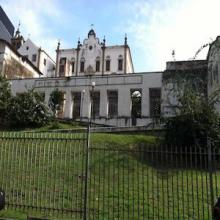
San Antonio Convent
Located in the capital city of Rio de Janeiro, Brazil, this convent is one of the oldest religious structures in the region. The current structure was built in 1780, during the final decades of Portuguese rule in the area. The Portuguese Crown had ruled this territory since the sixteenth century, and the monarch even lived there after having to flee from Europe when the French invaded in 1808.
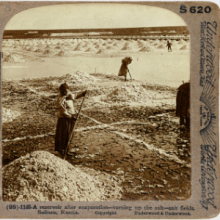
Salt Fields in Solinen, Russia
This stereograph, captioned "A reservoir after evaporation – turning up the salt – salt fields, Solinen, Russia," is an image of female workers breaking up the crust of salt formed after the evaporation of a reservoir and forming the salt into mounds for later collection. While the stereograph's caption notes the image was taken in Solinen, Russia, it most likely depicts the Kuyalnik estuary.
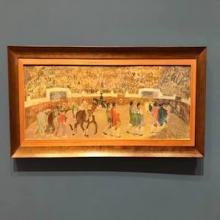
“Entrando a la plaza” by Pedro Figari
This painting from 1922 depicts a bullfight in a crowded arena of Montevideo, Uruguay. Scenes of these types of public events (also including circus and horse shows) were a favorite subject for the artist, Pedro Figari (1861-1938).
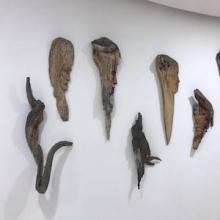
Artwork by Calixto Mamaní
Calixto Mamaní was an Argentine artist from the city of Salta, in the north of the country. His work emphasized the influence of the Incas, the indigenous peoples who ruled over much of the Andes Mountain region before the Spaniards arrived. These masks likely provide an example of this theme in his work.
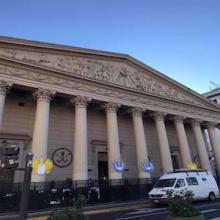
The Cathedral of Buenos Aires
The Catedral Metropolitana de Buenos Aires is the principal Catholic church in the capital city of Argentina. Although construction began around 1580, the church underwent a long building process, with expansions and repairs occurring over the next three-hundred years. It was built by the Spanish colonial government in the main town square, today called the Plaza de mayo.
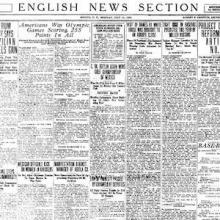
Mexican Newspaper Reports on American Women Crossing the Border
This story appeared in the two-page daily English-language supplement to El Universal, Mexico City’s most authoritative newspaper at the time. The story told of Mexican officials refusing entry to a group of women from the United States who made repeated attempts to get into the country.
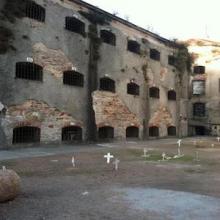
Espacio de Arte Contemporáneo
This building is located in the city of Montevideo, the capital of Uruguay. Once used for a prison, it now operates as a contemporary art museum. The complex was built in 1889 in the style of panopticon, which features several branches all centered around one point. That design intended to provide better security.
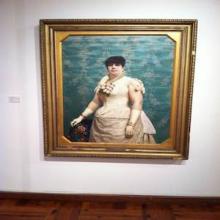
Portrait of Carlota Ferreira
This painting depicts a controversial figure in the history of Uruguay and Argentina. The subject is Carlota Ferreira, an upper-class woman born in Montevideo in 1838. She appears in fine clothing indicative of her social standing, such as her delicate white gloves and the gold jewelry that adorns her wrists. She was first married to Dr.

Newspaper Coverage of Pearl Harbor Bombing
When historians examine a particular story in a newspaper, they not only have to take into account the story's positioning on the page in relation to the other stories published that day, a way of getting a sense of the importance the editors assigned to the story, but also how a certain story has played out over several days in the same newspaper.
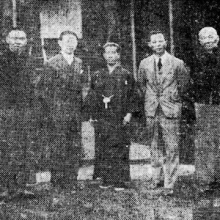
Hangzhou elites in 1935
The image shows an eclectic group of elites in Hangzhou in 1935, including Shanghainese gangster-businessmen Du Yuesheng and Zhang Xiaolin, Peking Opera star Mei Lanfang, Mayor of Hangzhou Zhou Xiangxian, and Japanese Consul at Hangzhou Yuzo Matsumura. Mei, Du, and Zhang were visiting Hangzhou to gather and donate funds for flood and poverty relief in the region.